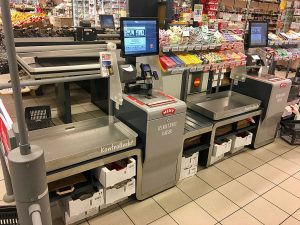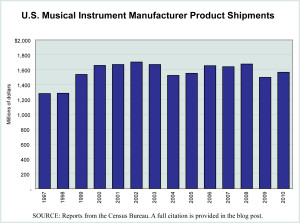
Nowadays these systems are also being used in the aerospace and defense, oil and gas, mining, quarrying, and healthcare industries. Pharmaceutical companies are using VCS to diminish the effects of vibration on sensitive equipment such as magnetic resonance imaging machines and DNA sequencing microarrays.
Today’s market size shows the global vibration control system revenues for 2019 and projected for 2027. Vibration control systems for the automotive and aviation industries are expected to drive growth in the industry. VCS manufacturers are being compelled to upgrade their products due to strict regulations and policies set by the United States government and airline regulatory agencies. Overall, demand is increasing for self-controlling, smart, adaptive VCS; web-based continuous machine condition monitoring; and Active Noise and Vibration Control Systems in aircraft.
In 2019, Europe had the highest revenue share due to a large number of automobile manufacturers in the region. North America had a market share of more than 19%. This region was an early adopter of vibration control systems, with large-scale systems being used in the U.S. electronics and electrical, automotive, and food manufacturing sectors. Growing demand for VCS in the United States and Canadian healthcare, aviation, and defense industries will contribute to revenue growth in the coming years. Many manufacturers and solution providers are located in North America. Many major manufacturers are also located in China. The Asia-Pacific region is expected to experience the fastest growth owing to rapid industrialization in China, Japan, and India. Rapid development in Brazil’s oil and gas, textile, automotive, and machinery and equipment industries will contribute to growth in Latin America. Some leading companies include ContiTech AG, Lord Corp., Resistoflex Pvt. Ltd., Hutchinson, Fabreeka, Sentek Dynamics Inc., Vicoda GmbH, Isolation Technology Inc., Trelleborg AB, and Kinetics Noise Control Inc.
1 The source’s predictions were made before governments around the world shut down many businesses to slow the spread of COVID-19 in 2019 and 2020. Once the effects of the shut down are analyzed in the months to come, these predictions may change dramatically.
Geographic reference: World
Year: 2019 and 2027
Market size: $4.3 billion and $6.7 billion, respectively
Sources: “Vibration Control System Market Size, Share & Trends Analysis Report by System Type, by Application (Automotive, Manufacturers, Healthcare, Aerospace & Defense, Oil & Gas), by Region, and Segment Forecasts, 2020 – 2027,” Grand View Research Report Summary, April 2020 available online here; “Vibration Control System Market Size Worth $6.7 Billion by 2027: Grand View Research, Inc.,” CISION PR Newswire, April 23, 2020 available online here.
Image source: egon isaksson, “twilight-helicopter-himmel-1324836,” Pixabay, April 12, 2016 available online here.



